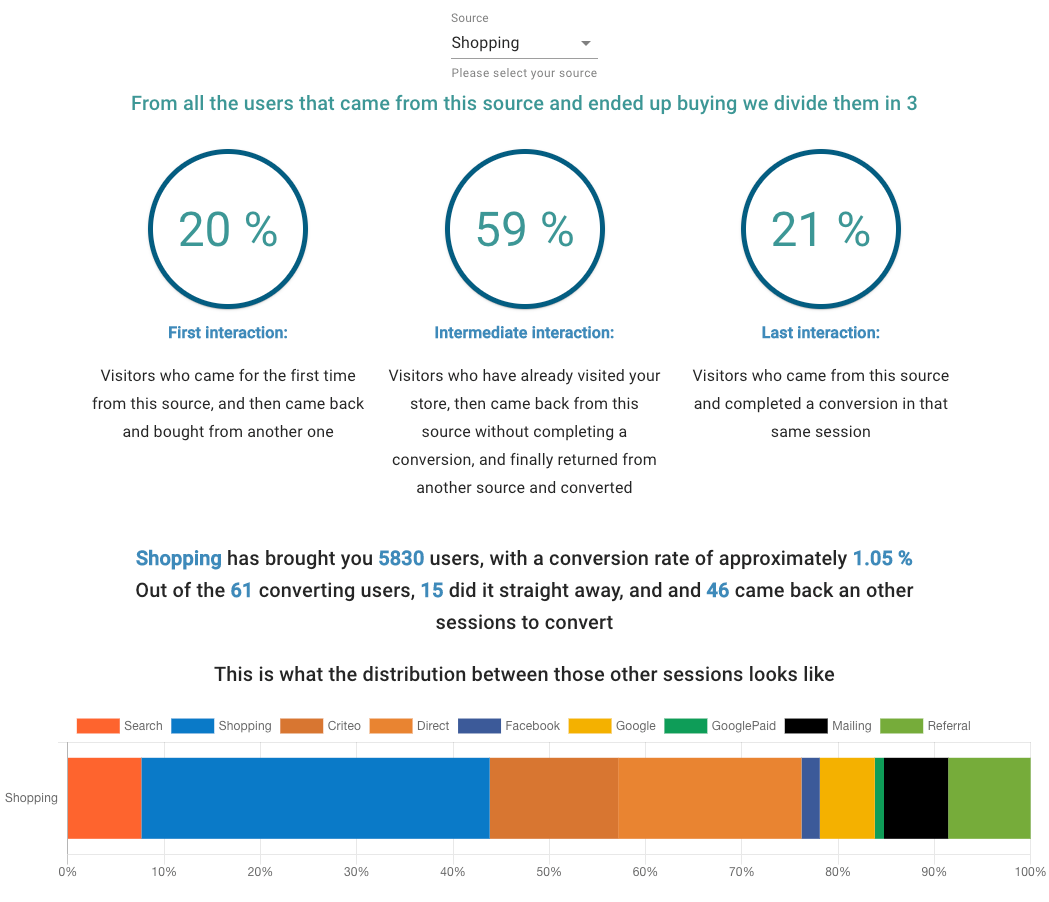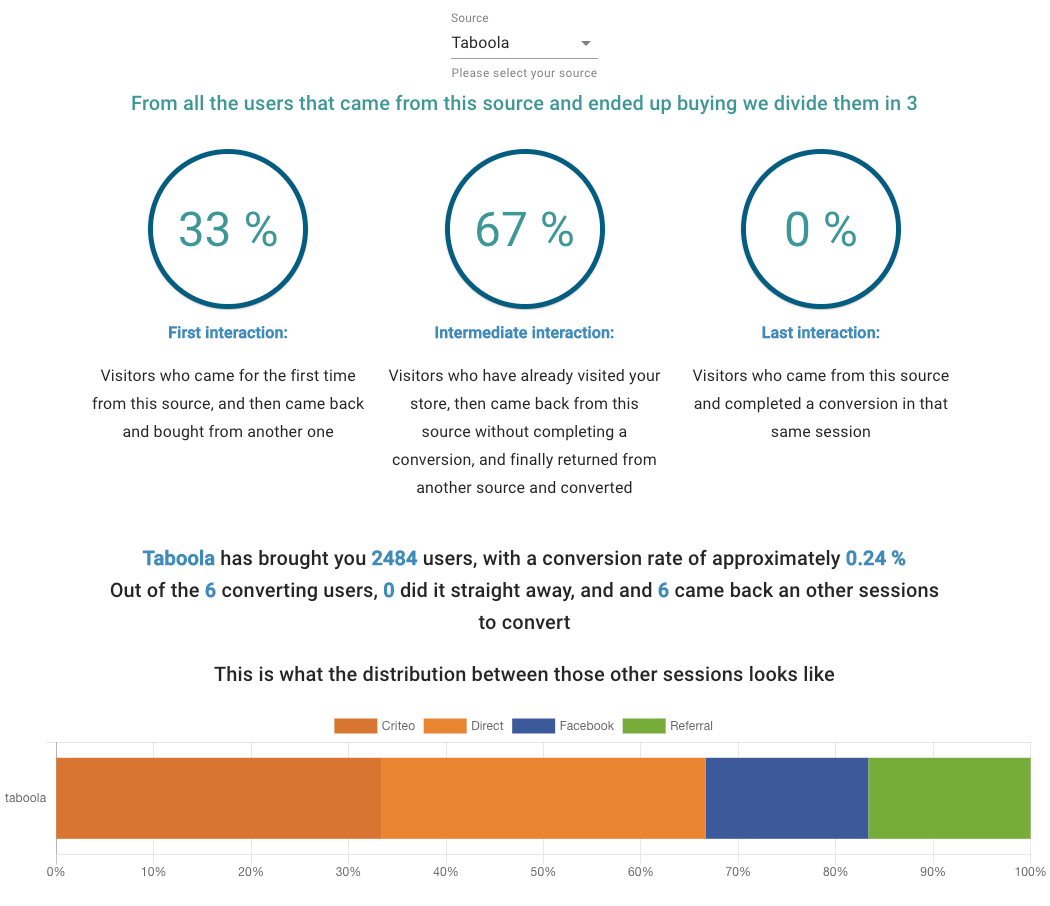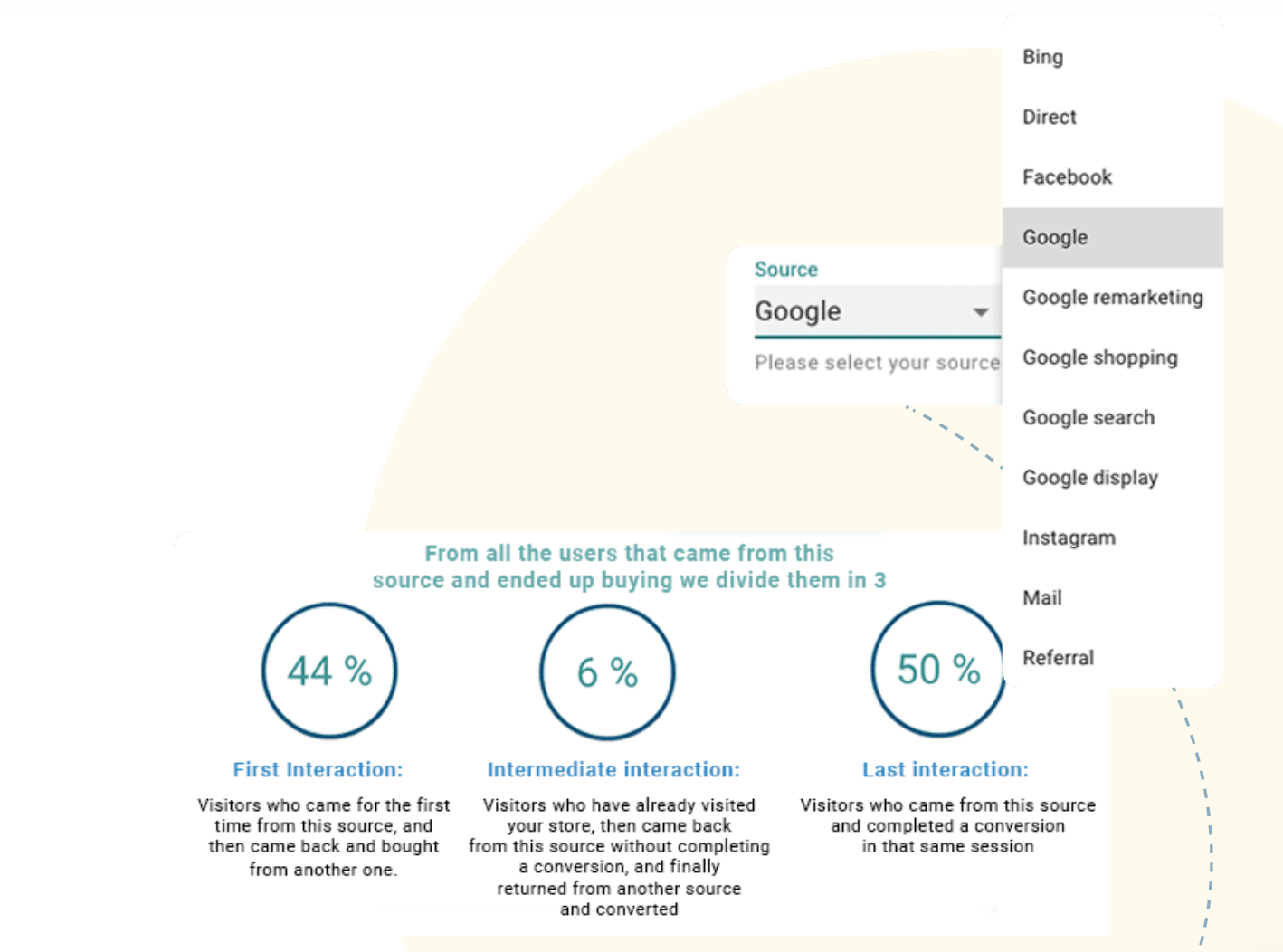Customer journeys are the first step to a successful marketing plan
Knowing exactly the journey a customer a customer follows across sources from the first time they come into your site (first interaction) until they convert (last interaction) can help you a lot when making a marketing plan: it gives you information about which role every channel is playing in your funnel, and from there you can deduce how to use that channel in a better way: first, you can target users specifically depending on costs (for example, target only new users via Facebook, or use Google Ads only for retargeting); and second, and just as important, you now know what kind of message you have to give through each channel. It's obviously different what you have tot tell someone who already knows you and trusts you to make him buy again, than what you should say to someone who has no idea who you are, what you sell and why it's good.
We divide a customer journey into 3 phases:
First interaction: This is the source from which the customer came in his very first visit.
Intermediate interaction: These are all the sources from which a customer came to your site between his first session and the conversion.
Last Interaction: This is the source from which a customer visited in his conversion session.
What can you do with this information?
As we said, the messages you have to give people vary in each step of the way, so here's a rough guide as to what you should say in every interaction.
First interaction: These customers don't know you exist, so your message should be based on an explanation from zero of who you are and what you are selling.
Content: The best choice is to show ads that explain what you are selling. Always bear in mind that you have to educate these customers on your product and make them love it before you can expect them to even consider buying. If you show them an ad with your logo and a coupon they won't pay attention to it, because they don't even know what are you selling: it means nothing to them.
Audience: You can either create an audience based on interests and behaviors that you know go along with your product, or create a lookalike audience of your customers or past visitors. The objective of this phase is to find new potential customers, so you whatever you do, you should never use a remarketing audience in this step.
Objective: You can optimize your campaign for sign-ups or visits to your website. Optimizing for a purchase or a custom event on conversion, it most likely won't work, because these customers aren't looking to buy from you yet: they'll want to know the product and brand first.
Intermediate interaction: These customers already know your product and brand, but aren't ready to buy yet. This can be for a number of reasons: maybe they don't need your product yet but they will in the future, and are just making research right now; or maybe they just aren't convinced yet of buying from you, and need a little push.
Content: These people already know what are you selling, and you also already have information about their behavior on your website. From this you can extract which products or categories people like, and target them with ads that appeal specifically to the products they showed more interest in. Using CTA’s can give the push people need to complete a purchase.
Audience: You can create a remarketing audience segmenting your past visitors who didn't buy into different groups, based on which URLs they visited the first time. For example, you can divide them into groups based categories they visited, and show them related, relevant content in the ads.
Objective: You can optimize your campaigns for conversion events like add to cart, initiated checkout or purchase.
Last Interaction: These customers are ready to buy. They know exactly who you are, what you are selling, and its advantages vs competitors. All they need is a reminder, a final convincing message, for them to click on your link and buy. On the other hand, you already know what they are interested in, and can use this information to create relevant, converting campaigns.
Content: You can show them ads with products they like with a clear Call To Action, or even show them coupons or discounts, making a strong push for them to buy.
Audience: You already know exactly what each of these customers wants, so you just have to create remarketing audiences based on those interests.
Objective: Purchase.
What else can I see in Sensai?
Besides every source's interaction level, we also show you the way users return to buy after visiting from a specific source. So for each traffic source you have, you can see how many come back from which other sources to buy.
For example: when users come from Google Shopping but didn’t buy, you can see many of them came back from Google Shopping once again before buying, and how many came from another source, like mailing.

This is also very valuable information for you to you make your marketing plan: seeing all the sources involved in a purchase helps you realize the true cost of every source. If Google Shopping actually needs multiple visits both from google search, but also from many other paid sources, the cost per conversion is higher than you can see in your Google Ads dashboard.
If on the other hand, as shown below, Taboola requires less interactions from paid sources, its cost doesn't rise as steeply as it did for Google Shopping.

You may notice that in the above examples, there is somewhat of a catch: Taboola is never a last-interaction source, which means it will always require more visits to convert someone.
Google Shopping, on the other hand, has an amazing 21% last interaction rate. This means that for 21% of Google Search sessions, you don't need any other, additional convincing step.
This is why we present both parts of the same picture together, and why you should pay attention to both when making decisions on source management.
